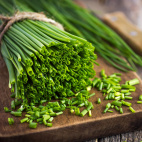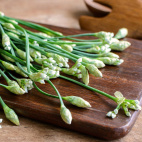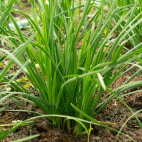Color
Availability
USDA Zone
Type
Duration
Season
Soil
Sunlight
Height
Use
Narrow Your Search
Color
Availability
USDA Zone
Type
Duration
Season
Soil
Sunlight
Height
Use
Herbs - Chives Seeds
Chive seeds are a member of the Allium family, and are closely related to onions, leeks, and garlic, however they are smaller and more mild than their cousins. These herb seeds for sale are a basic plant of the herb garden, and it is the greens that are used instead of the bulb. The hollow, needle shaped leaves can be clipped from time to time, and then finely chopped into various dishes like omelets, fish, soups, etc, giving them a mild onion-like flavor. The plant continually grows new leaves, so they can be clipped from time to time as needed for cooking. If you like garlic, then you might want to try Garlic Chives, which carries that flavor. The round pink flowers can be dried down and used in dried flower arrangements as well.
-
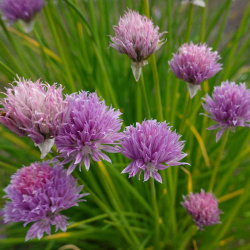 Chives Seeds
Open Pollinated
The foliage has a mild onion flavor that can flavor a wide variety of food! The onion-like leaves are hollow and grow back quickly after being cut for a tasty garnish. Round globes of pink flowers are very showy and will beautify your herb garden as well!Quick View$3.48 Pkt - $8.93 / Oz
Chives Seeds
Open Pollinated
The foliage has a mild onion flavor that can flavor a wide variety of food! The onion-like leaves are hollow and grow back quickly after being cut for a tasty garnish. Round globes of pink flowers are very showy and will beautify your herb garden as well!Quick View$3.48 Pkt - $8.93 / Oz -
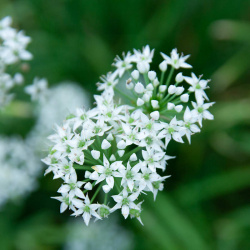 On Sale!
Garlic Chives Seeds
Open Pollinated
Garlic Chive seeds produce white flowers that are attractive in your herb garden! The thin flat leaves have a sweet garlic flavor and can be added to items like sauces, dips, salads, and steamed vegetables. Seed stems are also harvested and used in Asian dishes. This herb is moderately hardy.Quick Viewx
On Sale!
Garlic Chives Seeds
Open Pollinated
Garlic Chive seeds produce white flowers that are attractive in your herb garden! The thin flat leaves have a sweet garlic flavor and can be added to items like sauces, dips, salads, and steamed vegetables. Seed stems are also harvested and used in Asian dishes. This herb is moderately hardy.Quick ViewxGarlic Chives Seeds
Allium tuberosum
Garlic Chive seeds produce white flowers that are attractive in your herb garden! The thin flat leaves have a sweet garlic flavor and can be added to items like sauces, dips, salads, and steamed vegetables. Seed stems are also harvested and used in Asian dishes. This herb is moderately hardy.
$3.48 Pkt - $7.65 / Oz
Chive seeds are a member of the Allium family, and are closely related to onions, leeks, and garlic, however they are smaller and more mild than their cousins. These herb seeds for sale are a basic plant of the herb garden, and it is the greens that are used instead of the bulb. The hollow, needle shaped leaves can be clipped from time to time, and then finely chopped into various dishes like omelets, fish, soups, etc, giving them a mild onion-like flavor. The plant continually grows new leaves, so they can be clipped from time to time as needed for cooking. If you like garlic, then you might want to try Garlic Chives, which carries that flavor. The round pink flowers can be dried down and used in dried flower arrangements as well.



